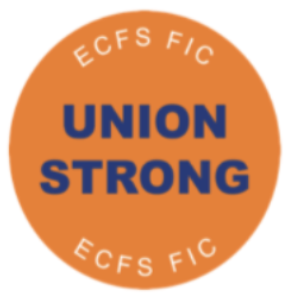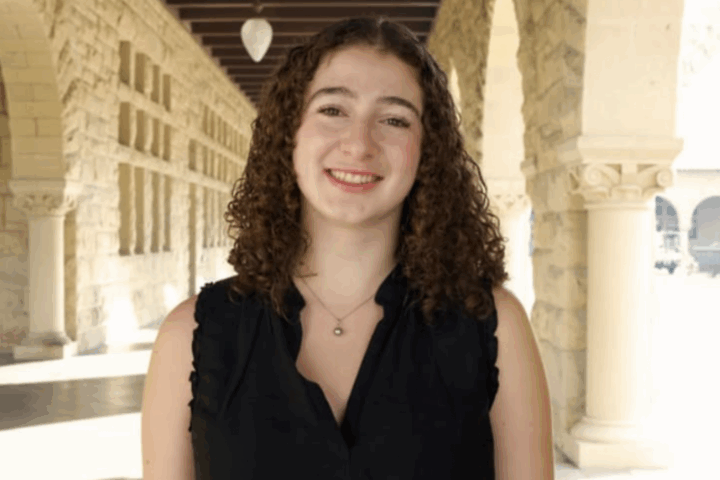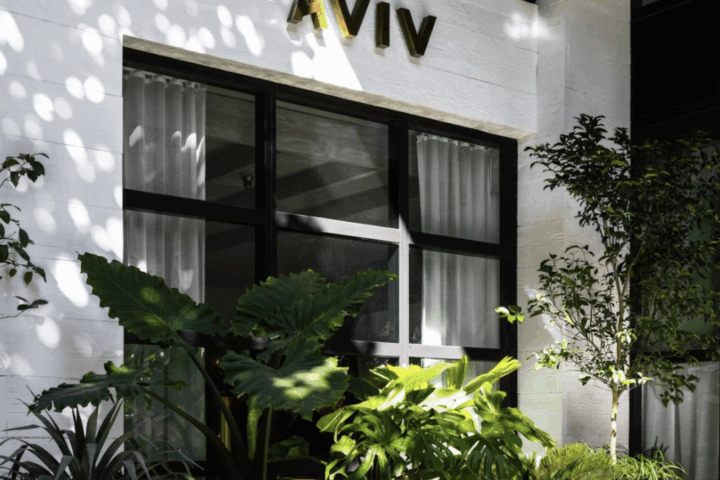Over the past few weeks, orange shapes have found themselves on the attire of faculty members, in the bylines of emails and the consciousness of the Fieldston community. Upon a closer look, one notices the shapes- actually pins and buttons- sport two words: ‘Union Strong.’ These buttons, alongside stickers with the phrase “I Am FIC,” are the emblems of Fieldston’s faculty union, otherwise known as the Faculty Interest Committee (FIC).
On a surface level, the committee’s name details its exact purpose: to advocate for the interests of Fieldston’s faculty. The union’s pronounced presence this year is a result of ongoing deliberation with the administration for a new collective bargaining agreement. Said agreement gets re-negotiated every three years. The last contract negotiation was in 2021 when the Fieldston community was still easing its way out of Google Meets and into hybrid learning. At the time, understandings of a ‘fair’ agreement differed. Now, with three years of in-person learning elapsed and the 2021 contract expiring this upcoming June 30th, demands have changed just as the responsibilities of the faculty have.
To understand the importance of the FIC Union, one must look to the unions that precede and parallel it.
Faculty unions are not a new phenomenon. In the United States, they date back to 1857 in Philadelphia when ten separate groups joined to form The National Education Association (NEA) with the initial purpose of, “elevat[ing] the character and advanc[ing] the interest of the profession of teaching, and to promote the popular cause of education in the United States.” Today, the NEA is the largest educational union in the U.S. boasting a network of 3 million members all involved in or dedicated to public education. Particularly active is the Chicago Teachers’ Union or CTU, which provides accessible information on contract rights, encourages political action for public education’s benefit and works to reach agreements with various government agencies. In addition, teacher unionization took over national headlines earlier this year when tens of thousands of California educators went on strike, arguing that their income could not keep up with the cost of living in the state. In American life, unions see themselves as critical to protecting and advocating for the fair compensation of individuals who show up and pour everything into their respective fields. They thrive off a democratic sense of solidarity and, as the word ‘union’ implies, unity.
Thus, unions succeed through supporting not only themselves but also one another. The FIC Union historically exhibits this ethos. For instance, the Brooklyn Friends School, an independent educational institution, attempted to dissolve its union in September of 2020. In response, the FIC expressed in a letter of support, “We also know, from our own experiences, that unions at independent schools lift up the entire school community. Time after time, [the FIC Union] has played a critical role in improving conditions at our school that benefit not just us, but our students and their families.”
The FIC’s strength lies in sentiments like these in addition to its scale.
According to a Labor Organization Annual Report from the U.S. Department of Labor, as of May 8, 2024, the FIC Union is made up of 285 teachers, nurses, learning specialists, librarians, psychologists and school counselors. FIC Union President and Middle School Math Teacher Stu Quart believes there is power in these numbers and what they mean for the membership. In an interview some weeks ago, Quart expressed, “The [collective bargaining agreement] gives power to all the members because everybody is under the same agreement. We’re negotiating this new contract or collective bargaining agreement, and it affects everybody. It affects everybody in similar or the same ways, and we all want a contract that is fair and that expresses the importance and value of the union members to the school.”
When 285 people band together to advocate for the fair cause Quart speaks of, the impact is profound.
Thus, the members of the FIC Union vocally support their collective cause. Their camaraderie manifests in gatherings, promotion of FIC messaging through buttons and demonstrations with signs that contain lines like “We are the heart & soul of ECFS” and “Fair Salary Proposal Now!” It’s hard to miss the Union’s advocacy efforts, and this is intentional.
“This year we’ve tried to more outwardly express our solidarity,” Quart detailed. “There are certain federal laws that union members cannot be penalized for their union activities, so there is that protection. It’s a way to support one another and come together. It adds strength to positions you’re trying to make that show everyone is united.” He continued, “Also, everyone’s really feeling like they’re with each other and doing something important.”
As Union President, Quart’s role extends beyond Union meetings to share or listen to updates and inquiries. He is also involved in communication and discussion between the Union and the administration. Quart compared the format of a bargaining discussion to the conversation he shared with the News: school and Union representatives sit on either side of a table to discuss and amend proposals. This process occurs until both sides reach a conclusion they feel relatively comfortable with.
Of these negotiations, Fieldston Chief Executive Officer Kyle Wilkie-Glass wrote in a statement to The Fieldston News that, “The School’s goal in this negotiation is to find common ground that addresses the needs of the School and respects the rights and concerns of our faculty. Especially over the last decade, the School has engaged in efforts to make tuition increases as manageable as possible for families and the cost of salaries and benefits is a major factor in our expense structure.”
Wilkie-Glass continued in his statement, “Disagreement is natural and can be expected to arise during these negotiations. The School’s dedication to fostering fairness through competitive wages, benefits and working conditions reflects our support for the well-being of all faculty. We look forward to continuing our bargaining with the FIC and we are committed to respectfully, thoughtfully and professionally considering every proposal put on the table as we work toward a new agreement.” Quart echoed that, “Both sides- [the Union] and the School- do our best to state our case and why we think our proposal is a sensible proposal and why we think the other side should go for it.”
At the heart of the FIC proposals are “general things that apply to anybody working.” Quart explained this criteria as including salaries, benefits and various “other pieces.” Beyond equitable monetary agreements, the FIC Union maintains that all proposals should align with prioritizing community interests for Fieldston faculty who act as a pillar of the school community.
Wilkie-Glass shared a similar idea in his recent statement. He recounted, “In my time at the School, I have seen our faculty deliver exceptional teaching, care empathetically for students and families and devote their careers to advancing the educational mission of our School.”
Thus, it all comes down to a collective bargaining agreement that honors the faculty’s immense contributions to Fieldston as they presently stand and also as they will evolve over the next three years. Fieldston’s faculty make the school the place it is. Faculty spend their days shaping the minds of students and infusing the days of young people with purpose. They discuss topics they care about in awe-inspiring ways, teach problem-solving in a manner that assures students they can solve some of the world’s greater problems and dedicate themselves to the progress of others- all with an unparalleled level of thought and intentionality.
As the FIC and administration work to find common ground on a proposal that union members will then vote on, the spirit of the Union remains steadfast.
At the end of the day, Quart explained, “The members of the Union love working at [Fieldston] and choose to work [at Fieldston.] One can acknowledge [their professional capacities and abilities] in a newspaper article, an email from the school’s offices to the parents or Fieldnotes and that’s all great, but it also needs to be acknowledged in terms of value. [Faculty] are starting to take more pride in what their value is, their worth and what they bring.”
07/24/2024 Update: Since this article’s publication, the FIC Union and administration ended collective bargaining agreement negotiations. A new agreement was proposed and voted on with overwhelming approval from the Union membership. In a summer interview, Union President Quart expressed, “I like to think that both the school and Union are happy with how things played out. […] My takeaway from this was really that the strength, unity and solidarity of the membership is what leads to a favorable contract.”






